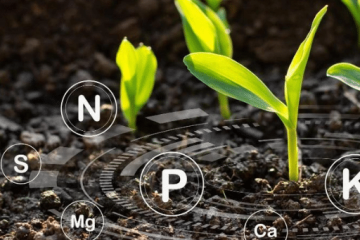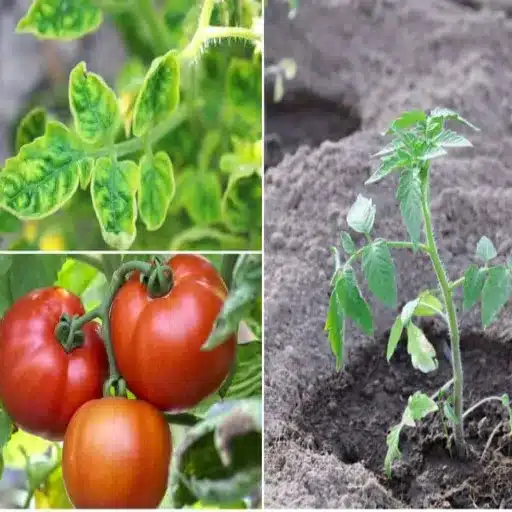Gardening success often hinges on one crucial factor that many overlook—soil quality. Among the various soil types, humus-rich soil stands out as an essential component for cultivating nutrient-dense, thriving plants. But what exactly is humus, and why does it matter so much? This article dives deep into the science and practical benefits of humus-rich soil, equipping you with the knowledge to transform your garden into a productive, sustainable ecosystem. Whether you’re a seasoned gardener or just starting, understanding the role of humus in the soil will elevate your gardening practices to new heights. Read on to discover how this organic powerhouse enhances soil structure, fosters beneficial microbes, and boosts plant health in ways that synthetic inputs simply cannot replicate.
Introduction to Humus and Its Importance
What is Humus-Rich Soil?
Humus-rich soil is typical of soils containing decomposed materials of an organic nature called humus. This dark spongy material forms as plant and animal matter breaks down through microbial activity. Humus is essential to healthy soil, as it enhances the physical, chemical, and biological properties of soil, making it an environment in support good plant growth.
Humus-rich soil has water-holding capacity but at the same time drains till excess water is removed so as not to cause waterlogging, and to give plants more water during dry spells. Further, humus stores very important nutrients for plant use, namely nitrogen, phosphorus, and potassium; hence, it continually sources nutrients for plant use. These features make humus-rich soil very suitable for gardening and agricultural activities.
The improvement of soil structure by humus occurs due to aggregation, whereby soil particles stick together to form stable aggregates that provide higher aeration and greater root penetration with fewer erosion hazards. The high microbial activity in humus soils also helps maintain soil health by suppressing soil-borne pathogens and encouraging beneficial fungi and bacteria. All these attributes make humus-rich soils highly useful in setting up a fertile and sustainable environment for plant growth.
Why Humus Matters for Soil Fertility
Humus plays a critical role in enhancing soil fertility by improving its physical, chemical, and biological properties. It increases the soil’s ability to retain moisture, ensuring that plants have access to water during dry periods. Additionally, humus enhances the cation exchange capacity (CEC) of the soil, which facilitates the retention and exchange of essential nutrients like calcium, magnesium, and potassium, directly contributing to plant health.
From a structural perspective, humus aids in maintaining soil porosity and preventing compaction. This improved structure allows air and water to move more freely through the soil, supporting healthy root systems. It also reduces surface runoff, limiting soil erosion and nutrient loss. These attributes make humus indispensable for sustainable agricultural practices and long-term soil management.
Biologically, humus acts as a reservoir of organic matter, supplying a continuous source of energy for microorganisms. These microbes play a pivotal role in decomposing organic material and cycling nutrients, making them available to plants. Furthermore, humus contains essential micronutrients and compounds that suppress harmful pathogens while promoting beneficial soil life, reinforcing its importance in creating a fertile and resilient growing environment.
The Role of Humus in Sustainable Agriculture
The role of humus is imprescriptible in sustainable agriculture since it augments soil health, fertility, and productivity in the long term. Being a biological agent, humus contributes to the structure of the soil by promoting aggregate formation that allows aeration, water retention, and drainage. These qualities minimize erosion, resist environmental stress, and conserve land viability for longer periods of agricultural activity.
Nutrient management is yet another major task performed by humans in sustainable agriculture. It serves as a reserve bank for nutrients needed by plants, nitrate, phosphorus, and potassium, releasing them slowly as per the demand of the plants. Moreover, the humus maintains the optimum pH of the soil for favorable plant growth. Hence, the availability of nutrients decreases dependence on synthetic fertilizers that harm ecosystems, in keeping with sustainable practices.
Lastly, humus favors a healthy population of soil microorganisms, which helps in stabilizing the ecosystem. Microorganisms beneficial to humus-rich soils break down organic matter and release nutrients, participating in natural nutrient cycling. In doing so, they foster crop growth with suppression of some soil-borne diseases, hence lessening the need for chemical pesticides. Put another way, humus constitutes a cornerstone for regenerative agricultural systems, securing both environmental sustainability and agricultural productivity.
The Benefits of Humus-Rich Soil
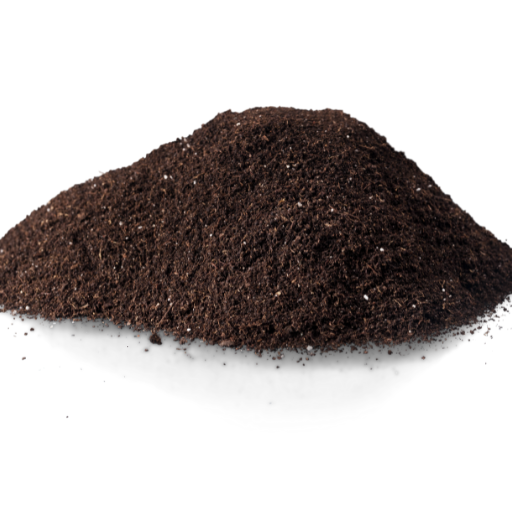
Improving Soil Fertility and Nutrient Availability
Humus-rich soils play a critical role in increasing soil fertility by enhancing the texture and nutrient-holding ability of the soil. This organic matter glues soil particles into aggregates that aid in aeration, infiltration of water, and facilitating root penetration. Humus also acts as an important nutrient reservoir for elements like nitrogen, phosphorous, and potassium. They are slowly released in forms usable by plants. Due to its high CEC, nutrients remain available in this root zone, preventing their leaching, thus making the plant sustain growth even under sub-optimal conditions.
The presence of organic matter in humus allows microbial activity as a primary energy source for soil microorganisms. With the help of these microorganisms, the cycling of nutrients takes place, which essentially means breaking down organic matter into simpler forms absorbed by plants. For instance, microorganisms fix nitrogen into an organic form of ammonium or nitrate through processes called mineralization and nitrification. Also, humus contains chelating agents that fix micronutrients such as iron and zinc, making them available to plants. This ensures the retention of both macronutrients and micronutrients at optimum levels in the soil, thus reducing even their dependency on synthetic fertilizers.
Research reveals the long-term benefits that humus confers on land in terms of maintaining agricultural productivity and mitigating environmental degradation. Soils with higher humus contents could retain more water. More water retention capacity means less need for irrigation, which conserves water resources. By enhancing microbial life and thereby reducing the causative organisms, humus could reduce the amount of chemical inputs like pesticides and fungicides. With such an integrative capacity to increase yield and align sustainability in agriculture, humus-rich soil is a must in regenerative agriculture.
Enhancing Water Retention and Soil Structure
Water retention and soil structure are fundamental to sustainable agricultural processes, principally owing to their effects on plant health, nutrient absorption, and overall ecosystem stability. The water retention capacity of soil is governed by texture, organic matter content, and aggregation. Thus, humus well-decomposed, stable form of organic matter, resists compaction and augments porosity, aiding in the resistance of the soil from drying out; by so doing, the soil moisture retention capacity is enhanced. Research confirms that 20 times their weight in water can be held in soils with ample organic matter, a quality that is indispensable in preventing water wastage and affording crop dry spell resistance in drought-prevalent areas.
Conversely, good soil structure enhances the percolation of water and prevents the erosive wastes of a precious topsoil; granules formed due to humus presence also give good water-air equality in the root zone, working against conditions that otherwise could hamper plant growth. It proves that well-structured soils tend to promote more efficient root access to soil nutrients; consequently, there is a marked increase in agricultural yield. The improved soil structure and improved infiltration rates avert over-irrigation and waterlogging, which are common causes of plant stress and soil degradation under classical farming regimes.
Utilizing humus as an important soil amendment is under consideration in proposing regenerative agriculture addressing water conservation and soil health problems existing both in the short and long term. Supporting practices that increase soil biodiversity and reduce compaction, such as cover cropping, crop rotation, and reduced tillage, complement humus well. In this way, they promote the maximum functioning of natural processes that foster sustainable water management and soil resilience. Consequently, humic soils portray a real solution for water efficiency, reduction in dependency on external inputs, and a very productive and ecologically friendly system.
Supporting a Thriving Soil Ecosystem
A thriving soil system depends on the fine balance between its biological, chemical, and physical factors. At the center of the biodiversity of soil lie organisms such as bacteria, fungi, and archaea, which are involved in nutrient cycling and organic matter decomposition. For instance, mycorrhizal fungi aid a plant in phosphorus uptake while also acting to improve soil structure by creating symbiotic networks among soil particles. Nitrogen-fixing bacteria like Rhizobium have great importance, conversely, in allowing atmospheric nitrogen to be fixed into forms useful to plants, further reducing the need for synthetic fertilizers.
Porosity and aggregate stability as physical attributes of soil likewise declare how suitable the ecosystem is to sustain plant roots and hold on to water and nutrients. To keep these properties in check approaches such as precision agriculture, biochar application, and real-time soil monitoring technologies come into play. Research has shown that around 0.4% annual increase in soil organic carbon may help much in ensuring higher crop yields and in mitigating climate change through carbon sequestration.
Next, from a chemical perspective, soils should be continuously monitored and managed for pH, cation exchange capacity (CEC), and nutrient content. Soils balanced in nutrient contents are less likely to suffer from deficiencies or toxicities, thus efficiently allowing plants to grow unhampered while simultaneously controlling leaching. Using data-driven soil testing together with advanced geo-spatial analysis, farmers and land managers can tailor site-specific interventions that further promote productive and sustainable soil ecosystems. This systems-based mindset underscores precisely when integrated soil management becomes pivotal to solving concerns in food insecurity and ecological degradation at a global scale.
How Humus-Rich Soil Improves Plant Health

Boosting Root Development and Nutrient Uptake
Rich humus soil works wonders in maximizing root development and optimizing nutrient uptake in plants, owing to its unique composition and properties. The organic components impart humus to soils while improving soil structure by binding soil particles into aggregates, thus increasing porosity and water infiltration. Such provides for a good root system by affording an aerated, well-drained environment wherein the roots of plants can grow and elongate freely. Humic substances buffer soil pH from both ends of acidity or alkalinity extremes, thus allowing an ideal medium for root health and function. These factors make humus-rich soil a keystone for refined root development.
From a nutrient-management standpoint, however, humus varies as a very reactive storehouse for nitrogen, phosphorus, potassium, and essential macro and micronutrients, while it also contains trace elements such as magnesium and zinc. Not only are nutrients kept in storage, but at the same time, they are rendered available to plants through microbial activity occurring within the soil. Such soil microbes break down humic matter, releasing nutrients in a gradual and controlled manner that can be further absorbed by plant roots. As well, humus has a high cation exchange capacity (CEC), so nutrients are held and retained in a form accessible to the roots, while nutrient leaching is diminished. This reinforces the nutrient retention within the plant’s rooting zone, ensuring nutrient uptake efficiency to the fullest and preventing nutrient wastage in the environment.
Moreover, humus aids in the mutualistic activities between roots and microbes, including mycorrhizal fungi. These fungi colonize roots and extend their hyphal networks into the surrounding soil, increasing the roots’ access to water and crucial nutrients, especially phosphorus. Humic substances also spur the secretion of root exudates, which promote microbial activity and build a healthy soil microbiome. All these synergistic processes are capable of ensuring that humus-rich soil continuously furthers the optimum conditions for root growth and nutrient uptake worthwhile to plant health and sustained agricultural productivity.
Protection Against Environmental Stressors
Being an important constituent of humus-rich soil, humic substances protect plants from various environmental stresses such as drought, salinity, heat, and soil pollution. These organic compounds retain water by enhancing soil structure and porosity, giving a slow release of moisture to plants when water becomes scarce. Conversely, they chelate heavy metals in soils, thus minimizing bioavailability to plants and the risks of toxic absorption. This feature gains significance in pollutant industrially challenged sites or high fertilizer levels at the surface level.
Moreover, humic substances facilitate the biosynthesis of plant hormones like abscisic acid (ABA) responsible for stomatal closure and decreased water loss during dry spells. They trigger a rise in antioxidant activity within plant tissues and in that way provide biochemical defense to plants against oxidative stress brought by high-temperature and ultraviolet radiation. At the molecular level, this interaction between humic substances and plant physiology contributes greatly towards alleviating plant stressors within natural systems as well as managed ecosystems.
A recent chain of investigations points out that humic substances mediate microbial interaction inside the rhizosphere and therefore enhance further plant stress resistance. Beneficial microorganisms supported by root exudates and humic substances can outcompete pathogenic species for nitrogen fixation and thus enhance plant health. This holistic activity of humic substances assures that plants realize their growth potential even under adverse conditions, with a prominent role in sustainable agriculture towards minimizing off-farm chemical inputs such as synthetic fertilizers and pesticides.
Linking Humus to Crop Yield Improvements
From my viewpoint, humus ought to constitute a highly prioritized grappling key to achieving consistent and sustainable crop yield improvements. As the endpoint of organic matter decomposition, humus contributes enormously to improving soil texture, moisture retention, and nutrient availability in the soil: all these benefits result in more efficient crop uptake of resources going into stressful situations like drought or poor fertility of soil. Picturing it’s being able to bind nutrients like phosphorus and potassium, the plants are provided with a steady supply of these vital elements during their peak growth stages of flowering and fruiting.
Conversely, the humic environment supports the microbial ecosystem critical for soil health and crop productivity. Beneficial microorganisms present in humus-rich soils actively encourage nutrient cycling, such as nitrogen conversion to forms readily utilized by plants. This biotic activity also strengthens root growth and improves the environment to reduce the incidence of plant diseases, as the microbial balance suppresses pathogens harmful to plants. In turn, these microbial relationships create a strong base that leads to the establishment of strong and resilient crops.
When put into practice as part of soil management strategies, humus offers a way to cut down on the use of synthetic fertilizers, thus contributing to sustainability and environmental consciousness in farming. Moreover, humus plays a great role in improving soil tilt and erosion control, thereby locking in soil fertility for use by the next generation. In this regard, I strongly hold that humus is an absolute requisite in improving a much more productive agriculture that is sustainable and long-term in soil health.
The Process of Creating and Maintaining Humus-Rich Soil
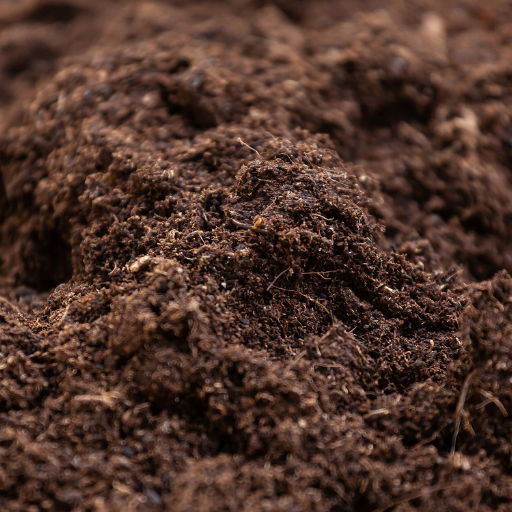
Step-by-Step Guide to Building Humus in Your Soil
- Conduct a Soil Test: Start with a detailed check of the current state of your soil. This invaluable data comes from pH determination, nutrient deficiency, and organic matter content tests, on which precise intervention measures can be based. The best humus formation takes place in soils with a pH in the neutral range of 6.5 to 7.0, since that provides the best conditions for the microbes to carry out decomposition.
- Add Organic Material: Incorporate well-matured organic material, such as well-prepared compost, decomposed plant residues, and animal manure. Above all, ensure there is a good balance of carbon and nitrogen materials. For example, brown materials like dried leaves will provide carbon, while green materials like grass clippings will supply nitrogen, and this balance is necessary for microbes to decompose these materials efficiently.
- Use Cover Crops and Green Manures: Growing cover crops such as clover, vetch, or rye in the off-season adds to their organic matter input. Soil erosion is prevented by these crops that aid in the formation of humus as they grow; however, green-mineral crops can be tilled under to add fresh organic matter to the soil for microbes to process.
- Promote Microbial Development: Make sure the soil remains sufficiently moist and aerated to encourage the development of microorganisms needed for humification. Microbial processes are hindered by waterlogging and compaction. Topsoil structure and microbial ecosystems are often conserved under no-till systems.
- Avoid Synthetic Inputs: Synthetic fertilizers and pesticides are to be kept at a minimum, as they disturb the native microbial community. The use of natural alternatives such as rock phosphate or bone meal is encouraged. They aid in improving the nutrient profile but do not disrupt biological functioning involved in humus formation.
- Composting: Prepare and maintain good quality compost–composted organic matter–by layering. Alternate layers of brown and green to ensure aerobic decomposition. Turning piles regularly ensures that the microbes will have adequate oxygen to quickly break down residues into stable humic substances.
- Use Crop Rotation: Rotate crops in a manner that increases the diversity of organic residues returned to the soil. Varied organic inputs feed the soil with various micro- and macronutrients, which in turn, enhances the development of a better and more durable humus layer.
- Monitor and Modify Activities: Keep assessment and evaluation going and follow the soil changes through time. The observer changes relating to soil texture, nutrient retention, and water-holding capacity. Modify input, irrigation, and other interventions based on observations to maintain humus.
Building and maintaining humus-rich soil is a continuous process that requires scientific precision and holistic management. By interfacing traditional agricultural practices with newer data-driven insight, the farmer, in collaboration with the gardener, can nurture two-step-soils, namely highly productive and ecologically balanced ones.
Using Organic Materials for Decomposition
Organic materials have to be used to facilitate good decomposition of soils, thereby increasing humus content and soil fertility. Organic materials, which include crop residues, animal manure, green wastes, and kitchen scraps, enter the soil through microbial activity. They serve as an energy-rich source for the decomposers, mainly bacteria and fungi, that enzymatically degrade complex organic molecules into simpler compounds that release nutrient counts like nitrogen, phosphorus, and potassium, while also contributing to the formation of organic compounds of ultimate stability that enrich humus.
A wider variety and balance of organic matter feedstocks favor a larger array of microbial activity, thereby optimizing several parameters. A high-to-low carbon organic matter mixture might consist of straw or sawdust coupled with grass clippings or animal manure. This mixture provides an organic matter feedstock with an ideal carbon-to-nitrogen (C: N) ratio, a ratio of about 25:1 to 30:1, which is of great importance to keep microbial efficiency in the decomposition process.
Technological upgrades in their turn can help with accelerating the degradation rate of organic materials, and any document of nutrient release. They might include thermal composting systems, biological inoculants, condition monitoring, and temperature. Moisture levels (should be maintained at 50-60% relative humidity), oxygen levels (to upkeep aerobic microbial degradation), and many other factors should be controlled to avoid anaerobic processes that would release unwanted by-products such as methane.
Precision agricultural tools, including remote sensors or soil health data platforms, allow for real-time monitoring of both decomposition processes and nutrient release rates. In conclusion, the rigorous organization in using organic materials alongside innovative technologies can favor soil fertility in the long term, thereby providing a sustainable form of agriculture, which diminishes the use of synthetic fertilizers and helps maintain ecological balance.
Practical Tips for Maintaining Humus Levels
- Implement Crop Rotation Systems: Crop diversification through scientific rotation helps in maintaining organic matter levels and reduces soil depletion. Rotations that consider deep-rooted crops such as legumes or cover crops favor the deposition of organic residues, which subsequently get converted into humus. Nitrogen-fixing crops used in these systems thus help with soil fertility.
- Adopt No-Till or Reduced-Till Practices: Exposure of soil to air in excess speeds up the degradation of humus, whereas the maintenance of surface residues with little or no soil disturbance through no-till or reduced-till farming creates conditions favorable for organic matter accumulation. The benefits of these practices extend to soil microbial communities that directly influence humus formation.
- Regular Application of Organic Amendments: Use of compost, fully decomposed, alongside well-aged manure or crop residues sponsor amendments that increase in organic matter content over time. Research shows that the application of amendments regularly keeps a stabilized balance of humus, which increases the soil’s ability to retain water.
- Monitor Soil pH and Nutrient Balance: The optimum value of soil pH is generally between 6 and 6.8, which supports microbial life that aids in the formation of humus. Testing of soil samples can help note values for pH, carbon-to-nitrogen ratio, and other micronutrients so that amendments can be placed accordingly to aid humus formation.
- Integrate Biochar for Carbon Stability: Biochar is a type of charcoal made from biomass under conditions of limited oxygen supply, thereby rendering carbon stable in a soil matrix. Integration of biochar into organic amendments has proven to increase the long-term amount of humus since it provides an incredibly resilient carbon sink.
- Support Microbial and Fungal Diversity: Encourage beneficial soil microbial and mycorrhizal fungal species through microbial inoculants or by keeping the soil covered with vegetation for long periods. These organisms catalyze biochemical reactions that convert organic matter into stable humus fractions.
- Practice Smart Irrigation: Over-irrigation led to the fast degradation of organic matter as waterlogging or anaerobic conditions are not sustaining for humus stability. Drip irrigation, or precision water applications, conserves water and optimizes microbial activity.
Employing these scientific, research-based practices while keeping a constant watch on important soil helps farmers and land-based managers foster large quantities of humus necessary for sustaining long-term soil productivity and ecological integrity.
The Role of Humus-Rich Soil in Sustainable Gardening and Farming
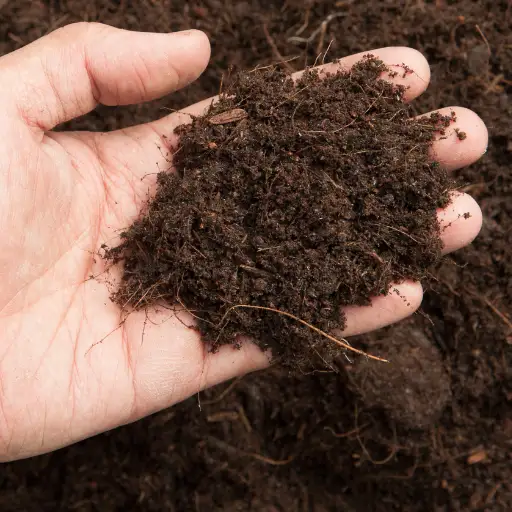
Environmental Benefits of Humus-Rich Soil
Humus-enriching the land serves to resolve environmental problems by improving the soil structure and ecological balance. The major ecological benefit lies in its carbon storage capacity; as carbon is sequestered, greenhouse gas levels in the atmosphere diminish. Studies show that soils with organic matter, especially of humic origin, can hold carbon approximately on a scale of 58 percent by weight, suggesting the use of soil carbon sequestration as an efficient means of countering climate change.
The water retention property of humus further helps in reducing water wastage and putting a curb on drought situations. Research indicates that functionality-wise, a 1% rise in organic matter content in soil will increase its water retention capacity by about 20,000 gallons of water per acre. This provides greater water availability to crops and reduces the need for irrigation.
A humus-rich soil also makes erosion less threatening by binding soil particles together, enhancing stability, and thereby decreasing runoff. In return, these help protect waterways against sediment pollution and nutrient leaching, conserving aquatic ecosystems. The pH-buffering and fertility-enhancing capabilities also reduce dependence on synthetic chemical fertilizers within the agricultural landscape, thus reducing pollution.
Humus aids microbial diversity and activity in combating soil-borne pathogens while simultaneously facilitating nutrient cycling crucial to plant health. These characteristics preferably place the organic humus garden and farming scenarios on the map of sustainable solutions for certain environmental issues.
Alignment with Organic and Regenerative Practices
Humus hangs on as a hinge on which organic and regenerative agricultural systems rotate with principles that pump ecosystem health and soil vitality. Organic farming prohibits synthetic inputs; therefore, it relies on humus to naturally feed the plant while improving the soil texture and its water-holding capacity. In such a way that the humus, with its high cation exchange capacity (CEC), would make the nutrients available in good time, thus negating the need for external inputs usually forced upon conventional farming systems.
Regenerative agriculture, with its healing priority for degraded soils and biodiversity enhancements, stands in good favor of humus in the manner it exists. Humus prevents the alleviation of soil erosion and degradation while assisting in climate mitigation by sequestering carbon and breaking it down into organic matter. Said to have ecosystems richer in organic carbon, humus in turn enhances soil aggregation and microbial biomass worth giving emphasis on these indicators of soil health.
In other words, these practices have deemed humus to be helpful in the relaxation of water infiltration and retention, on the way to solving drought resilience and water efficiency issues in farming. Physically, humus supports nitrogen fixation and helps in the suppression of pathogenic organisms. Hence, humus is considered an important amendment to soils and serves as the main driver toward the eventual sustainable production of agriculture that preserves the environment.
References
Frequently Asked Questions (FAQ)
Q: What is humus-rich soil?
A: Humus-rich soil is a type of garden soil that contains a high concentration of humus, a dark, crumbly substance formed from the decomposition of organic materials like plant and animal material. This soil is nutrient-rich and is essential for maintaining healthy plant growth.
Q: What are the benefits of humus soil?
A: The benefits of humus soil include improved soil structure, enhanced moisture retention, increased nutrient availability, and a supportive environment for soil organisms. Nutrient-rich humus acts like a sponge, allowing soil to retain water and nutrients, which is crucial for keeping the soil fertile.
Q: How can I add humus to my garden?
A: There are several ways to add more humus to your garden, such as incorporating finished compost from your compost pile or bin, using mulch made from organic materials, or adding aged manure. Adding compost and other organic matter can help increase the humus content in the soil.
Q: What is the difference between compost and humus?
A: Compost is not humus; it is a mixture of decomposed organic materials that can be used to enrich soil. Humus, on the other hand, is a stable, brown or black substance that remains in the soil after compost has fully decomposed. While both improve soil health, humus is more stable and provides long-term benefits.
Q: How does humus improve soil fertility?
A: Humus improves soil fertility by enhancing the soil’s ability to hold nutrients and water. It contributes essential nutrients to the soil and supports the growth of soil organisms that further aid in the decomposition process, making nutrients available to plants.
Q: Can earthworms help create humus-rich soil?
A: Yes, earthworms play a vital role in creating humus-rich soil. They break down organic matter, aerate the soil, and enhance the humification process, which transforms decomposed materials into nutrient-rich humus.
Q: What are soil conditioners, and how do they relate to humus?
A: Soil conditioners are materials added to improve soil structure and fertility. Humus acts as a natural soil conditioner by enriching the soil with nutrients and improving its crumbly texture, making it more conducive for plant growth.
Q: What is the role of wood chips in creating humus-rich soil?
A: Wood chips can be used as mulch to help retain moisture and suppress weeds, while also gradually breaking down to add organic matter to the soil. Over time, they contribute to the formation of nutrient-rich humus, enhancing soil quality.
Q: How does adding compost affect the nutrients in the soil?
A: Adding compost to your soil enriches it with essential nutrients and organic matter, which helps improve soil structure and fertility. This process supports the growth of beneficial soil organisms that contribute to the overall health and productivity of the soil.


